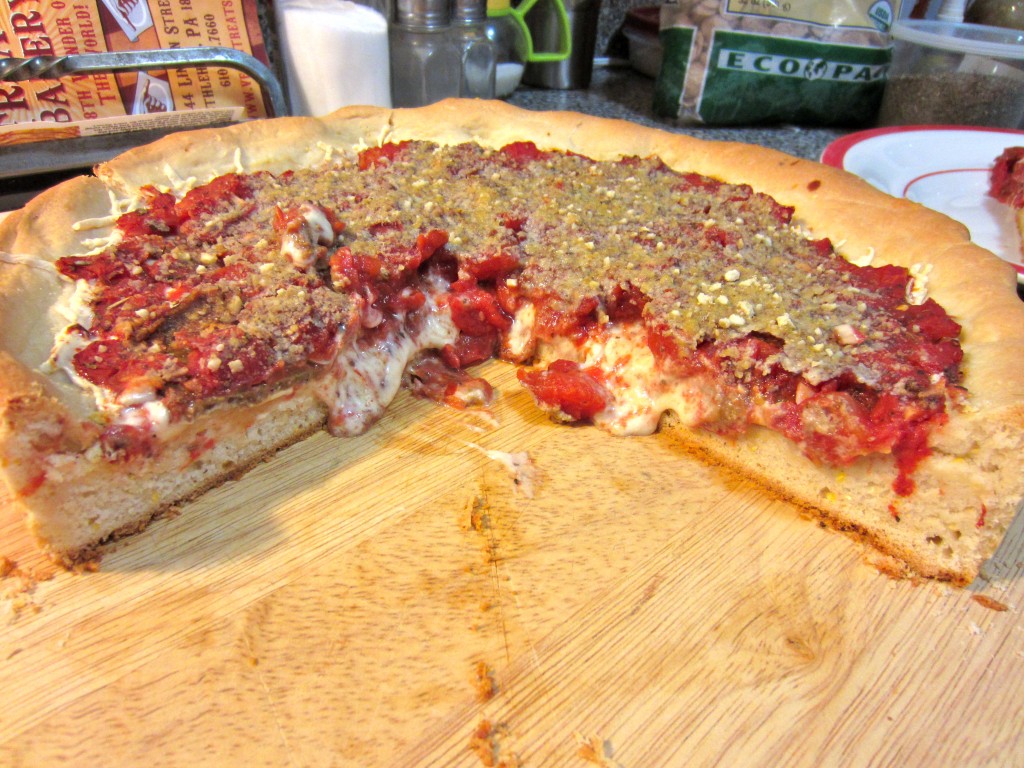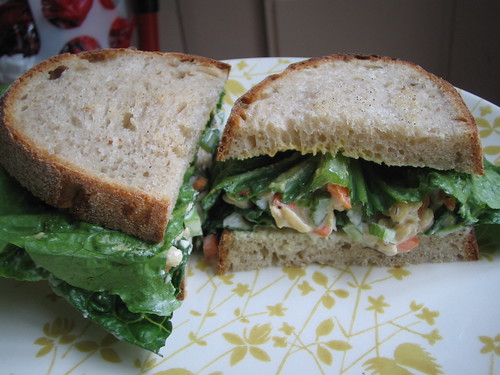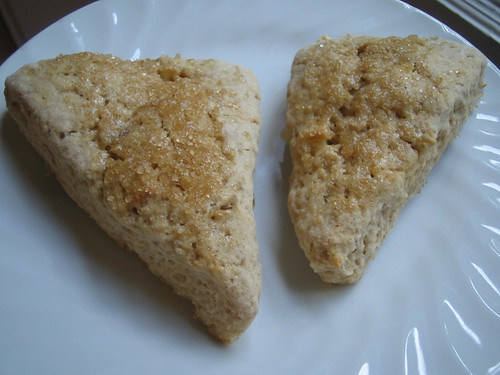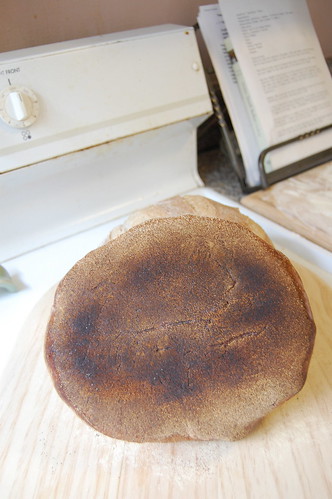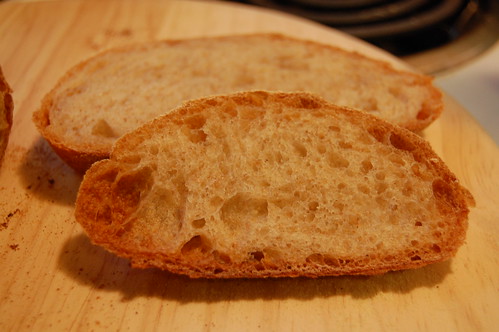Oh man. Click away if you’d rather not invest in fat pants. I always thought deep dish pizza might be difficult to make. The good, or bad, news is that it’s really easy to make.
King Arthur Flour puts out awesome recipes. They are rarely vegan, but veganize very well. I used this one for the pizza, substituting Daiya for the cheese, Earth Balance for the butter, vegan parmesan and Gutenfleischer’s pepperoni for the meat. And I added red pepper flakes to the tomatoes because pizza sauce should have some kick, damn it!
Now, don’t be afraid of yeast. If you’re having trouble with it, remember that it is temperature sensitive. Sadly, recipes like this one tell you to use lukewarm water, but many people don’t know exactly what that means. And it can affect your results. Here’s a handy chart of important temperatures related to yeast. Instant yeast wants to be mixed with 120°F water. It’s a good idea to check this with a thermometer since the yeast won’t act right if the water is too hot or too cold. But once you take care of that, the rest should work beautifully. Also remember that instant and active dry yeast are not interchangeable without some fiddling.
Another frustration when dealing with yeast is how much should it rise? Sometimes recipes give you an amount of time for the dough to rise and sometimes they tell you how much it should rise (double.) It’s best if they tell you both because the conditions in your kitchen are not going to be the same as the recipe writer. Maybe it’ll take 90 minutes for your dough to double. Then wait 90 minutes. If you don’t have a graduated container, mark double on the container you do have with a piece of tape and then you’ll know when it’s done rather than guessing.
The crust came out really rich with all the fat in it. And it was nice and sturdy. You could even pick up a piece to eat it once you’d chopped off some of the point and gobbled it up.
Now, for some more pizza porn. I used a coarse corn meal and you can really see it in the crust:
It’s been a while since I’ve submitted something to YeastSpotting, so here goes it!


